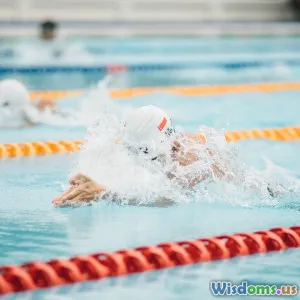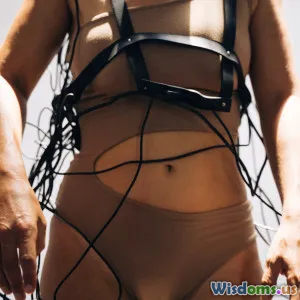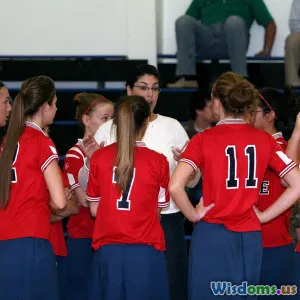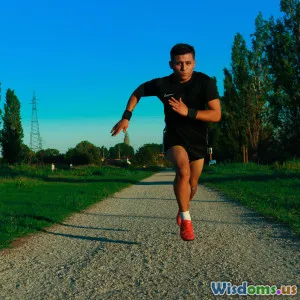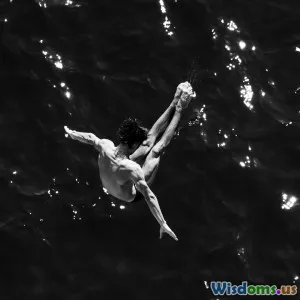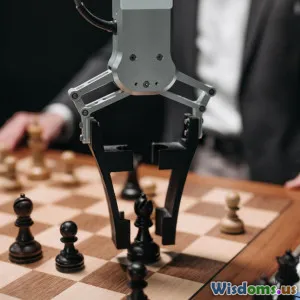
Can AI Replace Human Coaches in Analyzing Player Movements?
8 min read Exploring whether AI can fully replace human coaches in analyzing player movements in sports. (0 Reviews)
Can AI Replace Human Coaches in Analyzing Player Movements?
In recent years, Artificial Intelligence (AI) has profoundly changed many industries, including sports. With the rise of computer vision, machine learning, and real-time data analytics, AI tools can break down complex player movements on the field or court with extraordinary precision. But as AI systems become increasingly sophisticated, a bold question arises: can AI replace human coaches in analyzing player movements?
This topic touches on technology, human expertise, and the evolving nature of competitive sports. This article unpacks that question, offering a detailed exploration into AI’s current capabilities, the irreplaceable qualities of human coaches, and how the two can collaborate for the future of athletic performance.
Understanding Player Movement Analysis
Before assessing AI’s role, it’s crucial to understand what analyzing player movements entails.
Human coaches evaluate athletes’ positioning, biomechanics, decision-making process, and game context — often using video footage, statistical data, and personal experience. This analysis supports strategies in training, injury prevention, and tactical adjustments during competition.
Typically, coaches identify key movement patterns, such as how a soccer player accelerates or decelerates, a basketball player’s shooting form, or a tennis player’s footwork during rallies. Coaches combine objective observation with subjective wisdom to tailor guidance to individuals and teams.
AI’s Growing Role in Movement Analysis
Cutting-edge Technology
Advancements in AI, particularly in computer vision and motion capture, enable automated, detailed assessment of player movements. For example, AI algorithms can track joint angles, velocity, acceleration, and spatial coordinates in real time.
-
Example: Zebra Technologies partnered with the NFL to embed sensors within uniforms, enabling AI-driven tracking of players’ speeds and movement paths with high accuracy.
-
Example: Hawk-Eye Innovations, long used in tennis and cricket, have broadened to AI-powered analytics, offering metrics on stroke quality and player positioning.
Efficiency and Data Volume
AI can process vast amounts of data faster than any human, covering entire matches or training sessions. This provides granular insights about performance trends that are often hidden in raw statistics.
Objective Feedback
AI systems reduce potential human bias by providing consistent, data-driven evaluations based on raw motion patterns and outputs.
Real-world Impact of AI Coaches
Several professional sports teams already incorporate AI into their coaching staff, albeit as a complementary tool rather than a replacement.
-
Manchester City: Their data analytics team leverages AI to sift through player movement data collected during games and training, enhancing tactical decision-making.
-
Golden State Warriors: Utilizing sensors and AI-driven video analysis to optimize shooting drills and player conditioning.
Limits of AI: Can It Fully Replace Humans?
Despite its advantages, AI still faces fundamental limitations that challenge the notion of full replacement.
Contextual Understanding
AI excels with quantitative data but struggles with qualitative judgment: reading players’ mental states, understanding nuanced game contexts, and adapting strategy dynamically in unpredictable situations remain human strengths.
Emotional Intelligence and Communication
Coaching is deeply relational. Coaches motivate, build trust, and communicate complex feedback empathetically — facets AI lacks.
Ethical and Tactical Considerations
Sometimes, decisions hinge on values, sportsmanship, or gut instincts drawn from experience — intricate human judgments beyond algorithmic calculation.
Data Limitations
AI quality depends on the data’s breadth and accuracy. Gaps or biases can yield misleading insights. Moreover, some movement nuances are too subtle or complex to be captured by existing sensors or cameras.
Expert Voices
John W. Smith, a veteran basketball coach, highlights: “AI gives us incredible tools, but it can’t replicate the instinct to read the room, anticipate unspoken cues, or inspire a player to overcome obstacles.”
Synergistic Future: Human-AI Collaboration
Rather than a replacement scenario, most experts envision a partnership where AI augments human coaching.
Enhancing Human Expertise
AI handles data-intensive tasks — spotting movement inefficiencies, injury risks, and performance patterns — allowing coaches to focus on strategy, leadership, and player psychology.
Customized Training Programs
AI-generated movement reports enable personalized drills and conditioning with precision, optimized by coach interpretation.
Dynamic Tactical Adjustments
Real-time AI insights during matches can feed into coaching decisions, with humans contextualizing those insights tactically.
- Case Study: The Japanese national soccer team successfully integrated AI analytics in 2018 World Cup preparation without sidelining coaches, elevating overall team fitness and match awareness.
Challenges to Implementation
Deploying AI effectively requires overcoming hurdles:
-
Cost and Access: High-tech sensors, sophisticated software, and experts to interpret AI outputs can strain budgets, especially for smaller teams.
-
Data Privacy and Ethics: Player biometric data deserves rigorous security and consent protocols.
-
Training Coaches: Coaches need education to effectively harness AI tools instead of seeing them as black boxes.
Conclusion: A Complement, Not a Replacement
AI represents a transformative tool in the sports coaching ecosystem, bringing unprecedented depth to player movement analysis. Its ability to analyze complex patterns and provide objective, rapid feedback is reshaping athletic preparation and strategy.
However, the art of coaching involves intangibles rooted in human experience — empathy, intuition, ethical judgment, and adaptability in fluid competitive environments — which AI cannot replicate entirely.
The future belongs not to AI-only coaching machines but to integrated human-AI teams where advanced data analytics empower coaches to innovate and connect with players on a deeper level.
In the great intersection of sport and technology, AI enhances, but does not replace, the nuanced craft of human coaches analyzing player movements.
References
- NFL and Zebra Technologies partnership details: NFL communications, 2021
- John W. Smith interview, Sports Coaching Weekly, May 2023
- Hawk-Eye Innovations AI analytics case studies, 2022
- Tokyo Institute of Technology research on AI in sports, 2023
- Insights from the 2018 FIFA World Cup Japanese National Team performance analytics
This article aims to inspire coaches, athletes, and sport technologists to embrace AI thoughtfully, focusing on collaboration for optimized performance.
Rate the Post
User Reviews
Popular Posts











